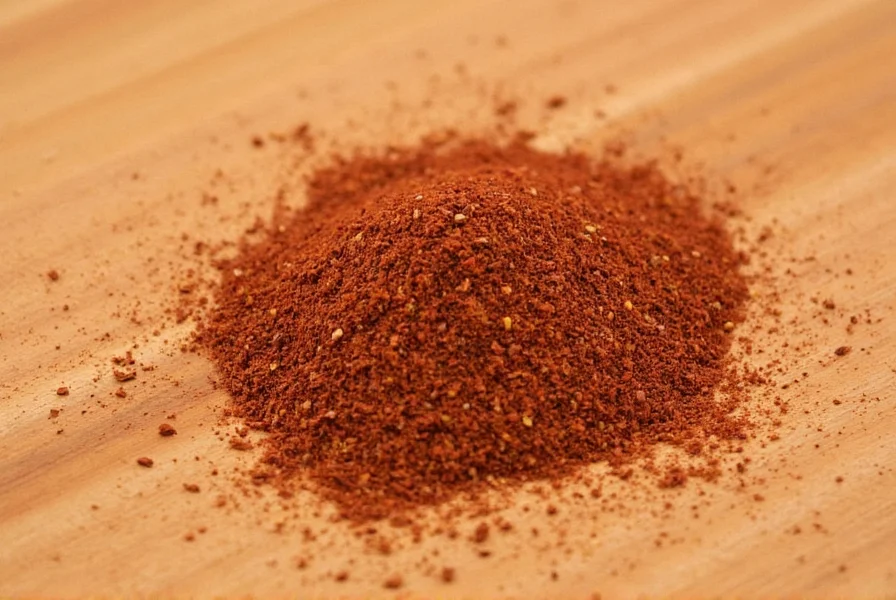Table of Contents
Practical Tips for Using Smoked Pork Roast Rub
Using a smoked pork roast rub effectively requires attention to detail. Follow these key steps for optimal flavor and texture:
- Pat the meat dry before applying the rub. Moisture prevents proper adhesion and reduces crust formation.
- Apply generously (1-1.5 tbsp per pound). Ensure even coverage for consistent flavor penetration.
- Rest for 12-24 hours refrigerated. Allows salt to tenderize and spices to deeply infuse the meat.
- Smoke at 225-250°F (107-121°C). Low-and-slow cooking develops bark without drying out the meat.
- Monitor internal temperature. Target 195-205°F (90-96°C) for perfect tenderness.
Pro tip: For sweeter bark, mix 1 part brown sugar with 3 parts spice blend to avoid burning during long cooks.
In-Depth Explanation of Key Ingredients
| Spice | Purpose | Flavor Profile |
|---|---|---|
| Black Pepper | Provides sharp bite and enhances other flavors | Pungent, slightly spicy |
| Cayenne Pepper | Adds controlled heat and depth | Hot, fiery |
| Garlic Powder | Creates savory umami base | Savory, aromatic |
| Onion Powder | Delivers mild sweetness and complexity | Sweet, mellow |
| Dried Thyme | Brings earthy herbal notes | Ethereal, herbal |
| Brown Sugar | Forms caramelized crust and balances heat | Sweet, sticky |
| Paprika | Adds color and smoky sweetness | Smoky, slightly sweet |

For advanced customization: Add coffee grounds for rich depth or mustard powder for tangy complexity. Always test small batches before committing to large quantities.
Buying Guide for the Best Smoked Pork Roast Rubs
1. Texas BBQ Rub by Smokehouse Classics
Best for: Traditional BBQ enthusiasts
Key Features: 40% paprika, 25% black pepper, 15% cayenne, 10% garlic, 10% brown sugar
Why it works: Perfect balance of smokiness and heat with excellent bark formation. Ideal for 8-10lb pork shoulders.
Use Case: Competitive BBQ, family cookouts, holiday meals
2. Sweet Heat Rub by Flame & Smoke
Best for: Home cooks seeking versatility
Key Features: 30% brown sugar, 20% smoked paprika, 15% chili powder, 15% garlic, 10% cayenne, 10% onion
Why it works: Sweetness caramelizes beautifully without burning, making it forgiving for beginners.
Use Case: Weeknight dinners, small gatherings, indoor smoking
3. Herb & Garlic Rub by Seasoned Living
Best for: Gourmet preparations
Key Features: 50% dried herbs (thyme, rosemary, oregano), 30% garlic, 20% black pepper
Why it works: Minimal heat lets the pork's natural flavor shine while adding aromatic complexity.
Use Case: Fine dining, wine pairings, special occasions
Frequently Asked Questions About Smoked Pork Roast Rub
What is the difference between a dry rub and a marinade for smoked pork roast?
A dry rub is a blend of dry spices applied directly to the meat's surface, creating a flavorful crust during cooking. Unlike marinades (liquid-based and primarily tenderizing through acid), dry rubs enhance flavor without altering texture. Rubs work better for smoking because they don't create moisture barriers that block smoke absorption, allowing for proper bark formation and deeper flavor penetration.
How much rub should I use per pound of pork?
Use 1-1.5 tablespoons of rub per pound of meat. For lean cuts like pork loin, use 1 tbsp per pound; for fatty cuts like pork shoulder, use 1.5 tbsp per pound to balance richness. Always press the rub gently into the meat to ensure adhesion.
Can I use a smoked pork roast rub on other meats?
Yes! Most pork rubs work well on beef brisket, chicken thighs, and even salmon. For beef, increase rub quantity by 20% for deeper flavor penetration. For chicken, reduce cayenne by 50% to prevent overpowering. For fish, use rubs with minimal salt and avoid sugar to prevent burning.
How long should I let the rub sit on the pork before smoking?
For optimal results, refrigerate rubbed pork for 12-24 hours. This allows salt to break down muscle fibers and spices to fully infuse. Never exceed 48 hours as excessive salt can cure the meat. For quick applications, minimum 2 hours at room temperature works but yields less depth of flavor.
Are homemade rubs better than store-bought ones?
Both have advantages. Homemade rubs allow complete customization and ingredient control (ideal for dietary restrictions). Store-bought rubs offer consistency and expert-formulated blends. Professional pitmasters often combine both: use a quality base rub and add personal touches like fresh herbs or smoked spices. The best choice depends on your cooking frequency and flavor preferences.
Conclusion
A well-crafted smoked pork roast rub transforms simple cuts into extraordinary dishes. By understanding ingredient roles, applying proper techniques, and selecting the right rub for your occasion, you'll consistently achieve restaurant-quality results. Remember: experimentation is key—adjust ratios based on your taste preferences and cooking environment. Happy smoking!










 浙公网安备
33010002000092号
浙公网安备
33010002000092号 浙B2-20120091-4
浙B2-20120091-4